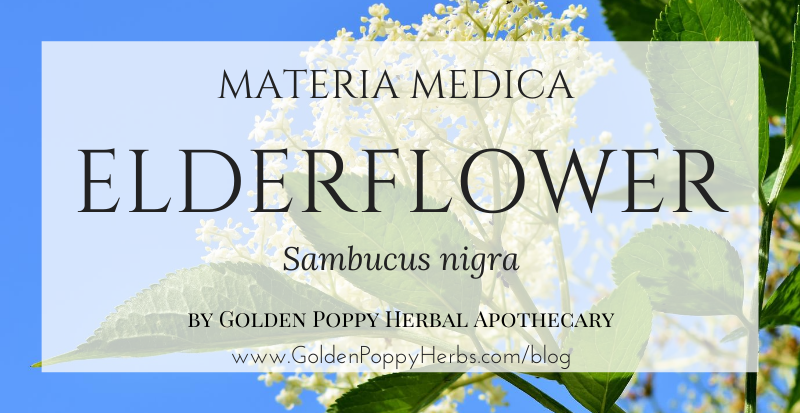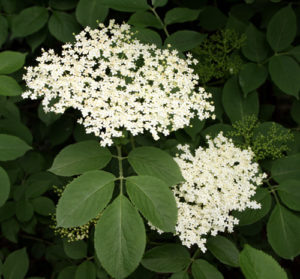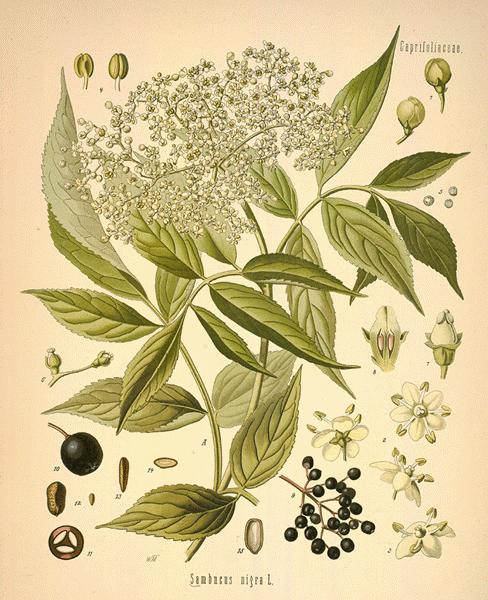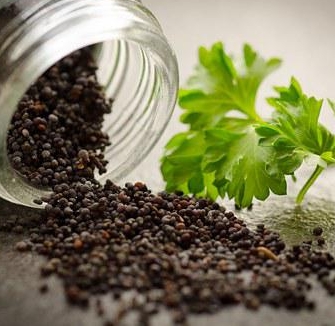Long revered for its immune-supportive and fever-easing properties, elderflower is one of those herbs every household should keep on hand for the cold and flu season. These delicate white blossoms not only adorn the elder tree with beauty but also offer powerful medicine that is safe for both adults and children.
While elderberries are famous for immune support and antiviral strength, elderflowers are best suited for acute illness support—those moments when a fever or head cold sets in and the body needs help moving it out.
Traditional & Modern Uses
As a diaphoretic herb, elderflower works by gently opening the pores and encouraging sweating. This action helps the body regulate fever, release excess heat, and expel waste products, making it particularly supportive during viral infections. By promoting a healthy fever response, elderflower does not suppress symptoms but supports the body’s natural defenses.
In addition to its diaphoretic qualities, elderflower is anti-inflammatory, anticatarrhal, and expectorant, making it especially helpful for sinusitis, seasonal allergies, and respiratory infections. It soothes inflamed tissues, thins mucus, and promotes drainage. Research suggests that herbal preparations containing elder may lead to less swelling of mucus membranes, better sinus drainage, milder headaches, and decreased nasal congestion (Ulbricht et al., 2014).
Elderflower has also traditionally been used as a gentle diuretic, a mild laxative, and a cooling remedy for hot, inflamed conditions. Topically, infusions and washes are applied to the skin for swelling, inflammation, and even soothing red, itchy eyes.
Cultivation, Identification & Harvest
The elder tree grows between 10–30 feet tall, with compound leaves composed of 5–11 serrated leaflets. Its hollow, pithy stems are distinctive, and in late spring to early summer, it produces flat clusters (panicles) of small, creamy-white flowers. By autumn, these blossoms give way to glossy dark purple or black berries.
When wildcrafting or planting:
- Ensure proper identification. Dwarf elder (Sambucus ebulus) is toxic and should not be used. *American elder (Sambucus canadensis) is safe and widely used, though most clinical trials focus on S. nigra.
- Always harvest ethically. Leave enough blossoms so the plant can fruit later in the season—elder generously offers both medicine and food, but balance is key.
- Avoid harvesting from areas exposed to pesticides or roadside pollution.
To preserve, harvest blossoms at full bloom, remove them from the stalks, and dry them in a single layer away from direct sunlight. Store dried flowers in airtight jars for year-round use.
Elderflower vs. Elderberry
While closely related, elderflowers and elderberries serve slightly different roles:
- Elderflowers: Light, dispersive, and cooling. Ideal for fevers, acute colds, sinus congestion, and allergy support. They open, move, and release.
- Elderberries: Dense, nutritive, and antiviral. Best for strengthening immunity, shortening viral infections, and building resilience over time. You can read more about the berries here: goldenpoppyherbs.com/elderberry-materia-medica
Together, they create a seasonal wellness duo: flowers for acute symptom relief, berries for long-term immune strength.
If you don’t have any on hand, you can always get some in the store, or you can go straight to the good stuff and pick up a tin of our Cold & Flu or Fever Buster Tea.
ELDERFLOWER MATERIA MEDICA
Latin Name: Sambucus nigra
Family: Adoxaceae (formerly Caprifoliaceae)
Parts Used: Flowers (dried); berries (cooked, for other uses)
Energetics: Mildly sweet, mildly bitter, slightly drying; both warming and cooling
Native To: Europe, Asia, Africa
Distribution: Widely naturalized, including North America
Key Constituents: Mucilage, flavonoids (including quercetin, rutin), volatile oils, free fatty acids, triterpenes, phenolic acids, minerals, sterols, sugars, tannins
Actions:
- Anti-inflammatory
- Antiviral
- Astringent
- Diaphoretic
- Diuretic
- Febrifuge
- Immune-supportive
Uses:
- Oral: Sinusitis, colds, influenza, bronchitis, seasonal allergies, constipation, fever
- Topical: Gargle/mouthwash for sore throats and laryngitis; washes for inflamed skin and mucous membranes
- Ophthalmic: Infusions for red, itchy eyes (used externally only)
Preparation & Dosage
- Tea: Infuse 1–2 tsp dried flowers in 1 cup boiling water; steep 10–15 minutes. Take 3x daily.
- Tincture: 2–4 mL (1:5 in 40% alcohol), 3x daily.
- Syrup: 2–3 tsp, 3–4x daily (often combined with berries).
Cautions
- Elderflower is considered Generally Recognized as Safe (GRAS) by the FDA.
- Raw elderberries (and other plant parts like leaves and bark) contain cyanogenic glycosides and can cause nausea or vomiting if consumed raw—always cook berries before use.
- Avoid dwarf elder (Sambucus ebulus), as it is toxic.
Closing Thoughts
Elderflower embodies the airy, opening qualities of spring: light, dispersive, and gentle, yet remarkably effective. Whether brewed as a tea to ease a fever, blended into an allergy-relief formula, or applied topically to soothe irritation, these blossoms offer a cooling balm for hot, inflamed states. Paired with its berry counterpart, elderflower helps create a well-rounded seasonal apothecary that has supported generations through times of sickness and seasonal change.
References
- Chevallier, A. (2000). Encyclopedia of herbal medicine. DK Publishing.
- Electronic Code of Federal Regulations. Title 21. Part 182 — Substances Generally Recognized As Safe. Available at: http://ecfr.gpoaccess.gov/cgi/t/text/text-idx?c=ecfr&sid= 786bafc6f6343634fbf79fcdca7061e1&rgn=div5&view= text&node=21:3.0.1.1.13&idno=21
- Hoffman, D. (2003). Medical herbalism. Healing Arts Press.
- Rowan + Sage. (n.d.). Materia medica: Elderflower. Retrieved August 27, 2025, from https://community.rowanandsage.com/c/materiamedica/elderflower
- Herbal Academy. (n.d.). Elder monograph. The Herbarium, The Herbal Academy. Retrieved August 27, 2025, from https://herbarium.theherbalacademy.com/monograph/elder/
- Natural Medicines Database. Elderflower Professional Monograph. https://naturalmedicines.therapeuticresearch.com/databases/food,-herbs-supplements/professional.aspx?productid=708
- Ulbricht, C., Basch, E., et al. (2014). An evidence-based systematic review of elderberry and elderflower (Sambucus nigra) by the Natural Standard Research Collaboration. Journal of Dietary Supplements, 11(1), 80–120. https://doi.org/10.3109/19390211.2013.859852
- U.S. Food and Drug Administration. (n.d.). Substances generally recognized as safe (GRAS). Title 21 CFR Part 182.





